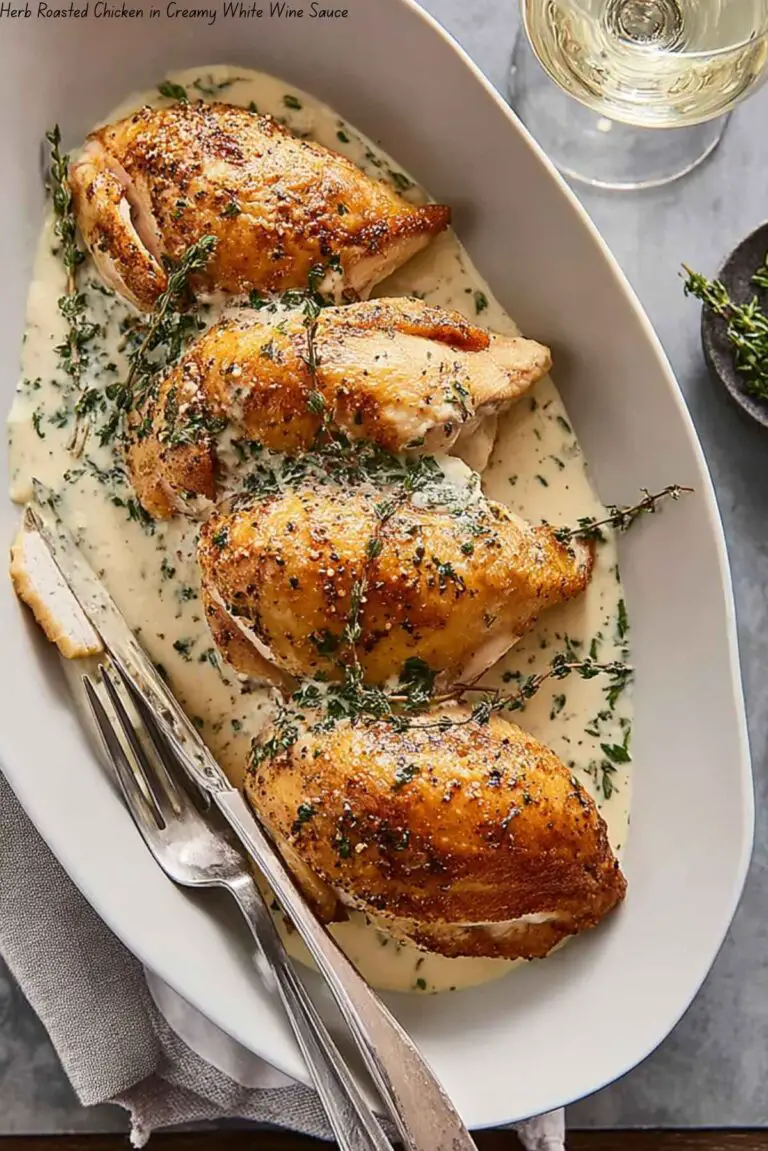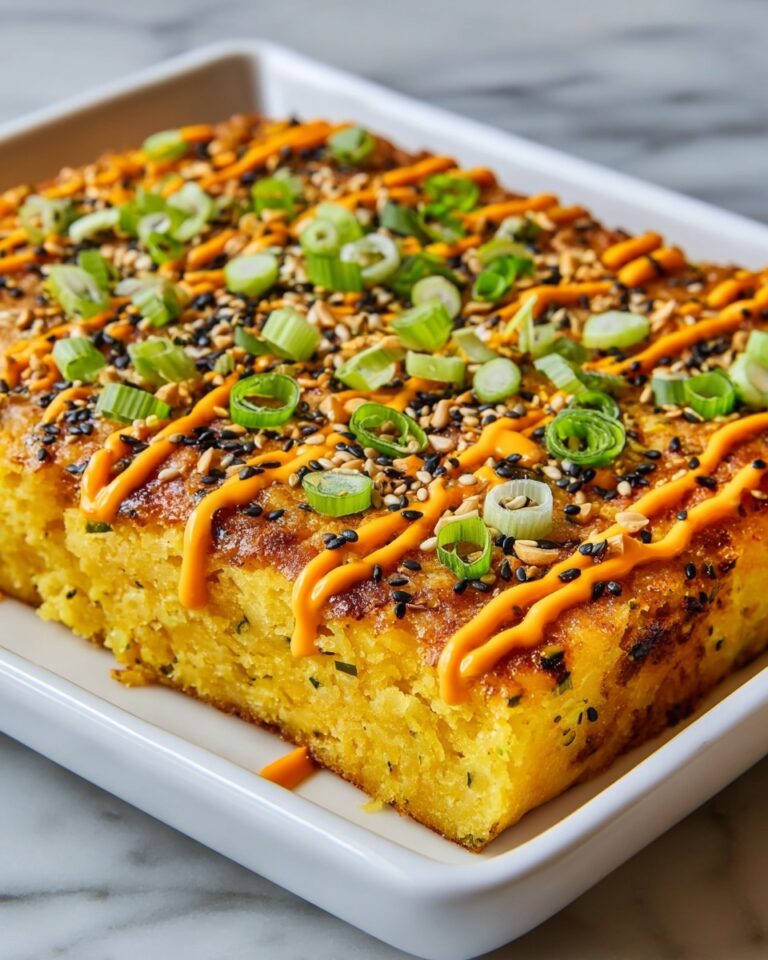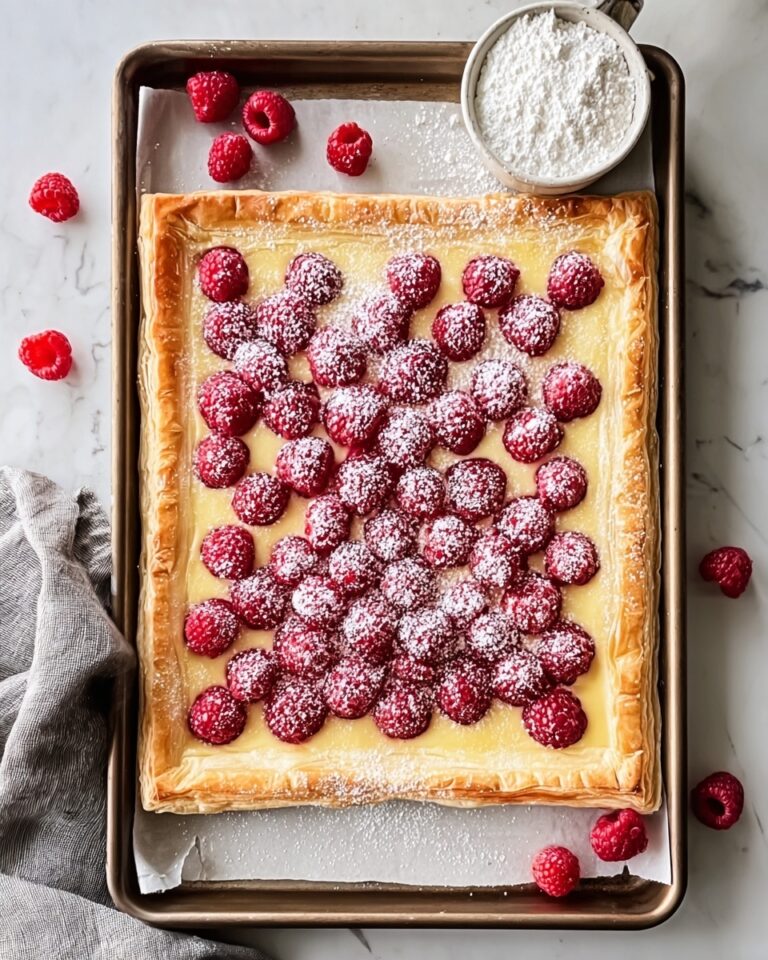Singapore Rice Noodles Recipe
If you’ve ever wandered the bustling streets of Singapore or peeked inside its vibrant hawker centers, you know that Singapore Rice Noodles Recipe is an absolute gem. It’s this lively, colorful dish bursting with flavors—you get curry powder’s warm kick, the subtle brininess of shrimp, and that perfect hit of umami from fish sauce. I love making it when I want something quick yet impressive; it always feels like a mini celebration in my kitchen.
What makes this Singapore Rice Noodles Recipe so special to me is how it manages to be both comforting and exotic at once. The noodles soak up the fragrant curry and spicy notes, all while staying tender but not mushy—a balance I know you’ll appreciate when you try it yourself. Plus, it’s a great way to jazz up weeknight dinners without spending hours over the stove.
Ingredients You’ll Need
These ingredients play together beautifully to create the signature flavor and texture of Singapore Rice Noodles Recipe. When shopping, look for fresh produce and good-quality dried rice noodles; the noodles make a big difference in the final dish.
- Shrimp: Fresh, shelled, and deveined shrimp add a lovely sweetness and protein to the dish. You can use frozen too—just thaw and pat dry.
- Canola or vegetable oil: Neutral oils that won’t overpower the dish’s spices.
- Asian fish sauce: Adds essential umami punch; don’t skip or substitute with something less intense.
- Dried rice stick noodles: Key for that perfect chewy bite. Soak them properly according to package instructions.
- Garlic: Fresh minced garlic provides a warm base aroma.
- Curry powder: Divided use helps layer the curry flavor without it becoming overwhelming.
- Soy sauce: Just a touch for saltiness and depth.
- Shaoxing wine: This Chinese cooking wine adds complexity; if unavailable, a dry sherry works as a standby.
- Ground white pepper: Adds mild heat and a slightly different peppery aroma than black pepper.
- Sugar: Balances the savory and spicy flavors perfectly.
- Eggs: Beaten eggs create richness and protein, turning the dish into a full meal.
- Chinese roast pork or ham: The char siu or ham adds a sweet-savory undertone and some chew.
- Onion: Thinly sliced to soften into the noodles without dominating.
- Red bell pepper: Adds freshness and a pop of color.
- Snow peas: They bring crunch and a hint of sweetness; slice them thinly to blend well.
- Carrot: Julienne for a touch of earthiness and color.
- Kosher salt: For seasoning throughout.
- Scallions: Thinly sliced for a fresh onion note in the final dish.
- Toasted sesame oil: A few drops at the end to add a luscious nutty aroma.
Variations
I love that this Singapore Rice Noodles Recipe is pretty forgiving—you can easily switch things up to suit your preferences or pantry. Here are some of my favorite tweaks that you might enjoy too.
- Vegetarian version: I’ve replaced shrimp and pork with tofu and extra veggies like mushrooms and bok choy. You’ll still get amazing flavor by adding a bit more soy sauce and a splash of vegetarian oyster sauce.
- Spicier kick: Adding sliced fresh chili or a dash of chili oil took it to the next level when I was craving a bit more heat—perfect if you like that!
- Gluten-free: If avoiding gluten, ensure your soy sauce is tamari or a gluten-free variety and double-check the curry powder ingredients.
- Seasonal veggies: Sometimes I swap out snow peas for snap peas or green beans depending on what’s fresh and in season.
How to Make Singapore Rice Noodles Recipe
Step 1: Prep Your Noodles and Shrimp
Start by soaking your dried rice stick noodles in warm water for about 15–20 minutes until they’re pliable but still al dente. Don’t over-soak—too soft noodles will get mushy later. Meanwhile, rinse your shrimp under cold water, then pat them dry and set aside. This prep makes the cooking flow so much smoother.
Step 2: Sauté Aromatics and Cook Protein
Heat 2 tablespoons of oil in a large wok or skillet over medium-high heat. Toss in the minced garlic and half of the curry powder—this wakes up those amazing spices and fills your kitchen with scent. Add the shrimp and cook until pink and just opaque, about 2 minutes per side. Transfer shrimp to a plate to prevent overcooking.
Step 3: Cook the Eggs and Pork
In the same wok, add a little more oil if needed and pour in the beaten eggs seasoned with kosher salt. Let the eggs cook undisturbed for about 30 seconds, then gently scramble until just set. Slide the eggs to the side and toss in the thin strips of Chinese roast pork or ham, sautéing briefly to warm through.
Step 4: Stir-Fry Veggies and Noodles
Add the onions, bell pepper, snow peas, and carrots to the wok, stirring often for about 2–3 minutes until just tender-crisp. Drain your noodles well, then throw them in along with the remaining curry powder, fish sauce, soy sauce, Shaoxing wine, white pepper, and sugar. Toss everything rapidly so the noodles evenly soak up all the flavors. This step’s where the magic happens!
Step 5: Finish and Garnish
Return the shrimp and eggs back into the wok; fold them gently into the noodles. Taste and adjust salt or fish sauce if needed. Turn off the heat, drizzle the toasted sesame oil over the noodles, then sprinkle the scallions on top for freshness. Serve hot and enjoy immediately!
How to Serve Singapore Rice Noodles Recipe
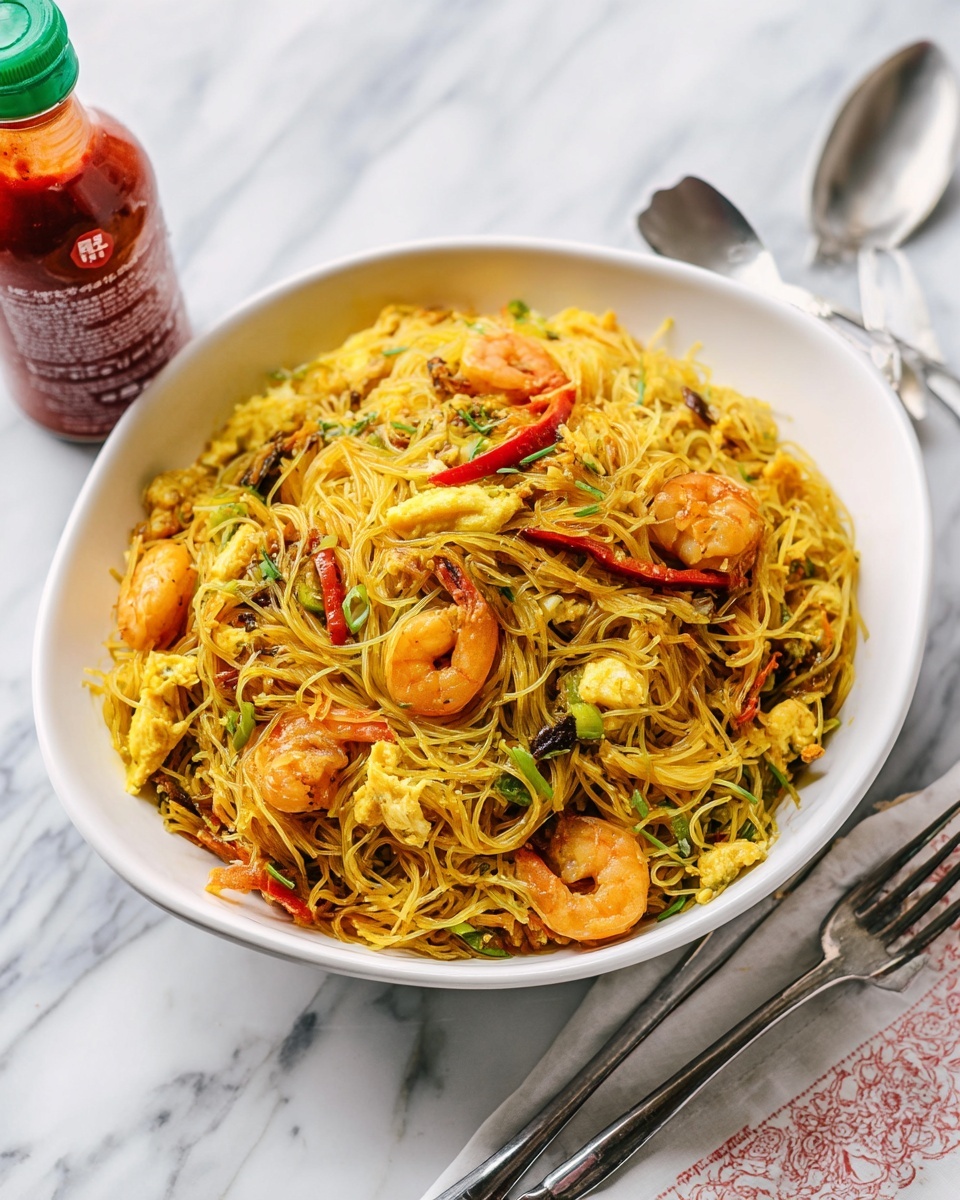
Garnishes
I always top my Singapore Rice Noodles with a few sliced scallions and a sprinkle of toasted sesame seeds for that extra nutty crunch. Sometimes I add a wedge of lime on the side—it brightens up the whole dish wonderfully.
Side Dishes
This dish works great as a standalone meal, but I like pairing it with light sides like steamed bok choy or a simple cucumber salad dressed with rice vinegar. It balances the richness of the curry noodles and keeps dinner refreshing.
Creative Ways to Present
For a cozy dinner party, I’ve served this Singapore Rice Noodles in small individual bowls alongside an assortment of chili sauces and pickled vegetables. It turns the meal into a fun build-your-own experience everyone enjoys. Plus, it just looks so colorful and inviting!
Make Ahead and Storage
Storing Leftovers
Leftover Singapore Rice Noodles store well in an airtight container in the fridge for up to 3 days. I let them cool completely before sealing to avoid steam buildup, which can make the noodles soggy.
Freezing
I’ve frozen this dish a couple of times, but the texture of the noodles can soften a bit. If you freeze, portion the noodles and veggies separately from the proteins and reheat gently to keep flavors intact.
Reheating
When reheating leftover Singapore Rice Noodles, I like to warm them in a skillet with a splash of water or broth over medium heat. Stir frequently until heated through—this helps restores some of the noodles’ bounce and keeps the veggies from getting mushy.
FAQs
-
What type of noodles are best for Singapore Rice Noodles Recipe?
Dried rice stick noodles, sometimes called rice vermicelli or mee pok, work best here. They soften quickly when soaked and have the right texture to absorb sauces without becoming mushy. Fresh rice noodles can be used but watch cooking time closely.
-
Can I make Singapore Rice Noodles Recipe vegetarian?
Absolutely! You can swap the shrimp and roast pork for firm tofu, tempeh, or extra vegetables. Just be sure to use vegetarian fish sauce or skip it and add extra soy sauce for umami.
- Is curry powder essential in this recipe?
Yes, curry powder is what gives Singapore Rice Noodles its signature flavor. Using it in two stages helps build layers of curry fragrance without overpowering the dish. If you want more heat, you can add chili powder too.
- Can I prepare parts of this recipe ahead of time?
Yes! You can soak the noodles and chop vegetables and proteins ahead, storing them separately in the fridge. When ready, stir-fry everything quickly for a fresh-tasting dish.
- What’s the best way to reheat leftover Singapore Rice Noodles?
Reheating gently in a skillet over medium heat with a little water or broth prevents the noodles from drying out or getting mushy, maintaining the dish’s texture and flavor.
Final Thoughts
This Singapore Rice Noodles Recipe holds a special place in my kitchen rotation whenever I crave something both quick and bursting with flavor. It’s one of those recipes you’ll want to make again and again—perfect for impressing guests or brightening up your own weeknight meal. Give it a try, and I promise you’ll love the balance of fragrant curry, tender noodles, and fresh veggies dancing together in every bite.
Print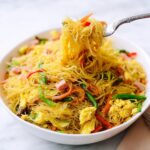
Singapore Rice Noodles Recipe
- Prep Time: 30 minutes
- Cook Time: 15 minutes
- Total Time: 45 minutes
- Yield: 4 servings 1x
- Category: Main Dish
- Method: Stovetop
- Cuisine: Asian, Chinese
Description
Singapore Rice Noodles is a vibrant and flavorful stir-fried noodle dish featuring delicate rice stick noodles, succulent shrimp, savory Chinese roast pork, and a medley of crisp vegetables. Enhanced with aromatic garlic, curry powder, soy sauce, and fish sauce, this classic Asian recipe delivers a perfect balance of spice, umami, and sweetness, ideal for a quick yet satisfying weeknight meal.
Ingredients
Proteins
- 1/4 pound shrimp, shelled, deveined, and rinsed under cold water
- 1/4 pound Chinese roast pork (char siu) or ham, cut into thin strips
- 2 eggs, beaten with two pinches kosher salt
Noodles
- 1 bundle (about 5 1/2 ounces) dried rice stick noodles
Vegetables
- 2 medium cloves garlic, minced
- 1/4 medium onion, very thinly sliced
- 1/2 medium red bell pepper, stemmed, seeded and julienned
- 12 snow peas, stemmed, tough strings removed, and sliced thinly on the bias
- 1/2 medium carrot, julienned
- 2 scallions, sliced very thinly on the bias
Oils and Sauces
- 4 tablespoons plus 2 teaspoons canola or vegetable oil, divided
- 2 1/2 teaspoons Asian fish sauce, divided
- 1 teaspoon soy sauce
- 1 teaspoon Shaoxing wine
- 2 teaspoons toasted sesame oil
Spices and Seasonings
- 1 tablespoon curry powder, divided
- 1/4 teaspoon ground white pepper
- 1/4 teaspoon sugar
- Kosher salt to taste
Instructions
- Prepare Noodles: Soak the dried rice stick noodles in warm water for about 20-30 minutes or until they are soft but still firm to the bite (al dente). Drain and set aside.
- Cook Shrimp: Heat 2 teaspoons of oil in a large skillet or wok over medium-high heat. Add the shrimp and half of the fish sauce, stir-fry until shrimp turn pink and are cooked through, about 2-3 minutes. Remove shrimp from the pan and set aside.
- Sauté Aromatics: Add 2 tablespoons of oil to the same pan and sauté minced garlic and onion until fragrant and translucent, about 1-2 minutes.
- Add Vegetables and Pork: Stir in red bell pepper, snow peas, carrot, and the Chinese roast pork strips. Cook for 2-3 minutes until vegetables are slightly tender but maintain crunch.
- Scramble Eggs: Push contents to the side of the pan, add remaining 2 tablespoons oil, and pour in the beaten eggs with salt. Scramble gently until just set.
- Combine Noodles and Seasonings: Add the softened rice noodles, cooked shrimp back to the pan. Sprinkle in the curry powder (divided between two times), soy sauce, Shaoxing wine, remaining fish sauce, white pepper, and sugar. Toss everything together over medium-high heat, ensuring the noodles are evenly coated and heated through, about 3-5 minutes.
- Finish with Scallions and Sesame Oil: Remove from heat, stir in sliced scallions and drizzle with toasted sesame oil. Toss lightly to combine flavors.
- Serve: Taste and adjust seasoning with kosher salt if necessary. Serve hot directly from the pan for a delightful and aromatic meal.
Notes
- Use dried rice stick noodles labeled for stir-frying or pad Thai to get the best texture.
- Curry powder preference may vary; adjust quantity to taste.
- Chinese roast pork (char siu) can be substituted with cooked ham or chicken for variation.
- If Shaoxing wine is unavailable, dry sherry can be used as a substitute.
- Be careful not to over-soak noodles to prevent them from becoming mushy during stir-frying.
Keywords: Singapore Rice Noodles, rice stick noodles, char siu, shrimp stir fry, Asian curry noodles




